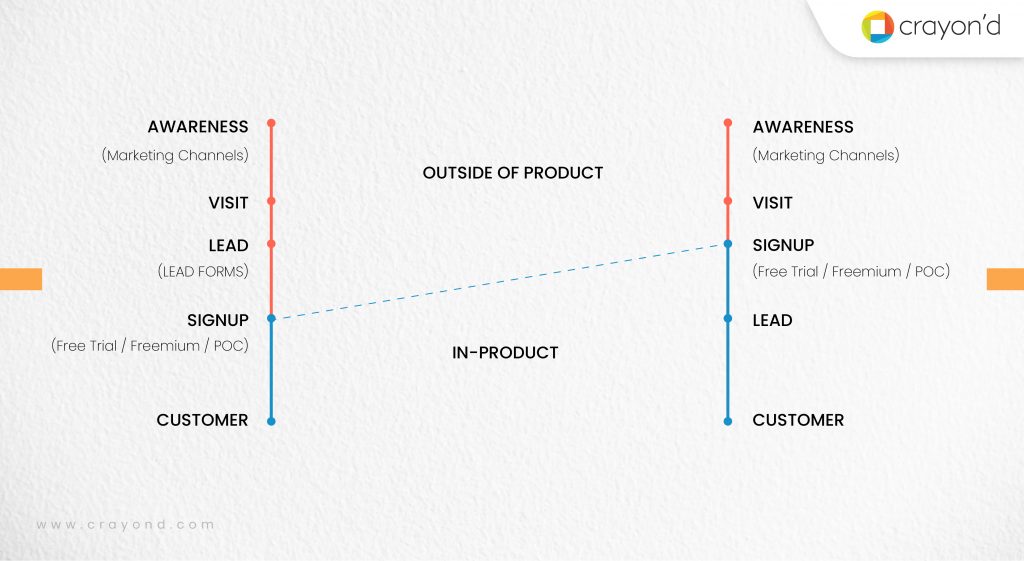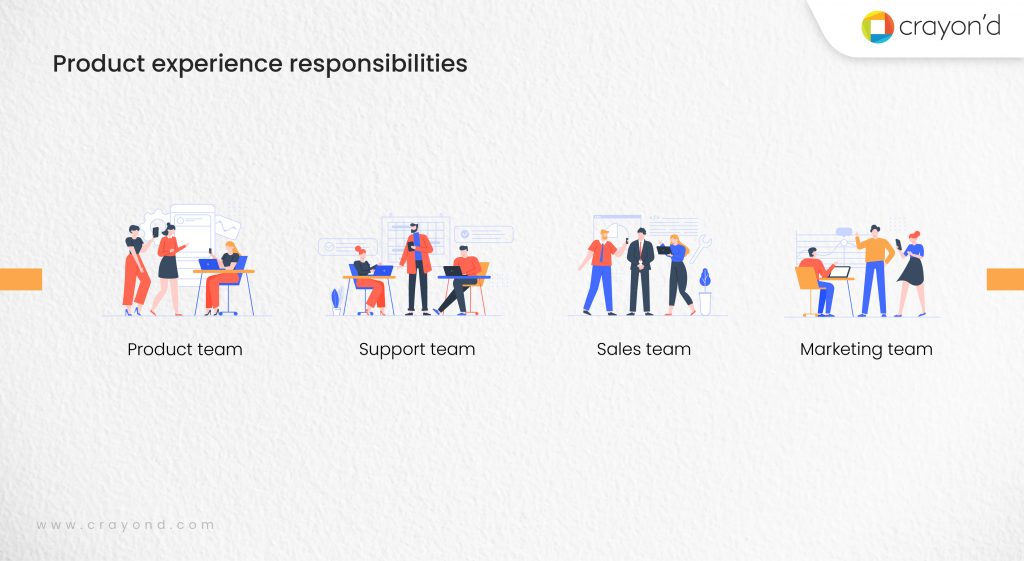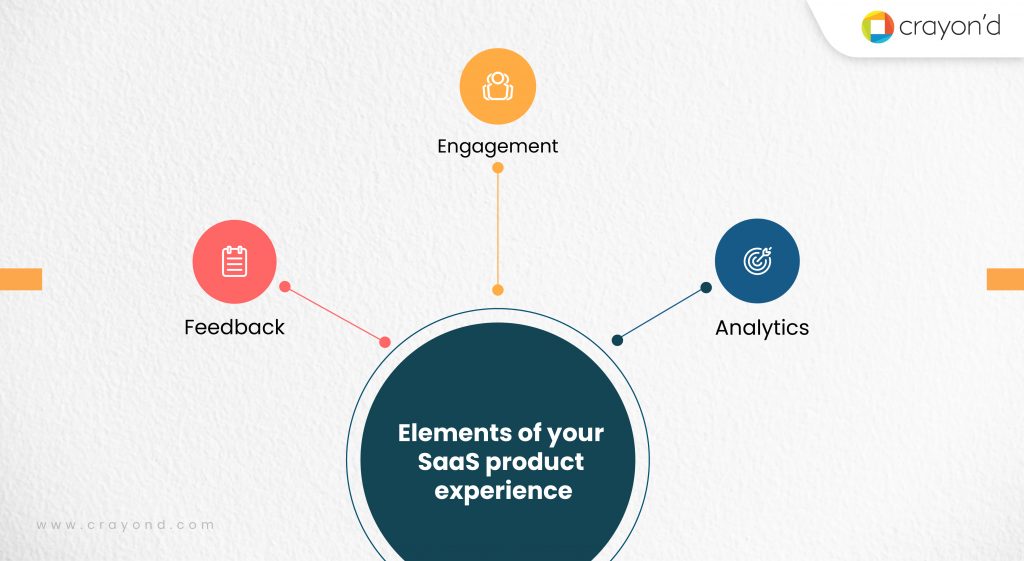The product companies have one magic potion that makes or breaks the business. Surprisingly, it is common for all—
The Product.
In today’s market dynamics, everything revolves around the product.
It has become the crux of purchase decisions. You have to be sure to make everything about the product indubitable.
SaaS products are baked in with two things— the features and the experience. The product experience goes into every nook and corner of the features. Embedded throughout, it has a significant effect on making your product succeed.
Well, if you ask, ‘Have you forgotten the users/customers?’
No, if the customer is the king, it’s the product that rules their mind. The customer and the product are two pieces of a puzzle. All you have to do is make them fit together perfectly! In shaping your products to be user-fit, product experience plays a huge part.
Aboard and join us in the journey to understand product experience elaborately. And while we drop you off, you would have started figuring out the product experience you wish to deliver.
What is the SaaS product experience?
Product experience is how your users feel inside the product.
It is the part of the customer journey that’s contained inside the product. Your product experience spans the entirety of the users’ stay inside the product— right from the onboarding to the last action performed.
Product experience (PX) is defined through the interactions they have with your product. These interactions trigger thoughts, emotions, and motives. Interactions include a click, a swipe, or any action they carry out within.
Perceptions of the product are formed based on product experience. Every interaction stimulates a feeling, and they add up to build an opinion.
Here’s an explanation in simple terms: When people enter a new room, they judge it through smell, look, touch, and encounters. Your product is the room here. Expect that most forms of senses are ruled out. It’s mostly touch and cognition that apply here.
That’s where the challenge of digital SaaS products lies. You got to elicit emotions with fewer factors in hand. On the whole, a product experience should be aimed at making the customer journey better.
Product experience (PX) vs Customer Experience (CX) vs User experience (UX)
Customer experience is the larger circle, where the UX and PX are a part of it.
Customer experience begins the moment a user gets introduced to the product and continues even after their churn. Product and User experience are limited to their time inside the product alone.
While UX is concerned mainly with a specific interaction and resulting usability perceptions, product experience goes beyond that. Though it is bound to interactions, product experience focuses on the customer journey. It is more about how the users advance in the customer journey, inside the product, through prompted emotions.
UX focuses on the betterment of interactions, while PX is concerned about the improvement of the journey.
Why is Product experience a crucial factor present day?
The short answer will be Product-led growth.
Users don’t buy a product right away.
But, their progression toward a purchase has changed a lot over the years.
Usually, they’d start with research and then see recommendations.
Just like how it is always better to eat from a restaurant to know if their menu is good, what really cultivates trust in users is seeing and experiencing the product themselves.
Hence, you can see a major shift from traditional timelines in the customer acquisition process
Level 1: Acquisition
Customer acquisition is no more an event that occurs outside the product.
Among other information sources used by B2B tech customers, product demos account for 58%. Here’s a comparison of traditional and new customer acquisition processes. The in-product domain has extended. Most of the decisions occur, inside the product, understanding the experience.

For people exploring your product, a bad product experience is an instant turn-off. In making the prospect a user, the product experience is one of the significant factors.
Level 2: Retention
Acquiring users is good. But it doesn’t guarantee you a forever with them.
Purchase cannot prison them like olden days. Remember the SaaS subscription models?
The real hook is your product value. And, product experience is one of the elements that bring in value realizations.
It creates a good impact on users’ minds. A positive experience is taken as a value, indeed, even though it’s only an enhancer.
Level 3: Advocacy
Product experience’s magic is not constrained to acquisition and retention. It can turn your users into loyal customers.
The accumulation of good product experience in every instance makes them trust your product. It’s reflected in the Customer Lifetime Value. They aren’t idle when they stay for a long time — they bring in new customers.
How?
Well, they talk about it!
“74% of consumers say that word of mouth is a key influencer in decisions to buy”
It improves the Net Promoter Score too. It is a complete circle, beginning from purchase to ending with purchase recommendations.
Product experience responsibilities
Product experience isn’t just confined to the product development teams. They are undeniably a crucial part. However, more people are to be involved as well. Because it isn’t just about the features. PX influences value perceptions. When the picture is big, the range of teams must be too!
Here are how the different teams contribute to being a part of the product experience.
Product team
The product team is responsible for product strategy and vision. They are the main creators of the experience. Their work on strategy, development, and management must enable them to fabricate a better experience. Their role is to take care of the experience to foster adoption and user retention.
Support team
While user interviews are a part of the product team’s life, the support team breathes it.
So, at times product teams might be caught with assumptions about users. And the customer support is just the opposite. They are filled with facts. Their input is significant in the product experience team.
It’s the customer support team that’s usually exposed to user emotions the whole time. Now, who’s the master?
Sales team
Sales as well is another customer-facing team.
The sales team is generally aware of what persuades the customers to convert. They have the idea of customers thinking at different levels. Imagine their insights going into the product experience. Definitely a powerful addition.
Marketing team
Marketing teams are well informed about the user’s responses and triggers. They play a vital role in bringing the product to light. The team sets the tone for product experience through content and messaging. Their campaigns are where the pre-product experience begins.

Elements of your SaaS product experience
It all comes down to this: creating a good product experience for your SaaS products. The experience is shaped alongside product design. However, you need a few more elements that are necessary to maintain and enhance it. They contribute to increasing the value through regular optimizations.

Feedback
Users’ minds and creators’ minds are entirely different from each other. Creators’ thoughts are to be in line with the users’ needs. And feedback is where they meet.
Feedbacks are the actual shaping hands that perfect your product.
Make regular feedback a part of your development process. Even after development, when your product is in users’ hands, you never stop improving it and elevating it. So, your doors must always be open to feedback.
It’s significant that you actually process the feedback, drive the insights and apply it in the process further. Feedbacks can be received through surveys and as inputs from customer-facing teams.
Products Analytics
Asking is one thing. Observing is another. Your observations can unveil insights that might be missing in your user feedback.
Analytics is the best form of observation. It’s like a live commentary of your product performance.
And product analytics provides you with a powerful tool— data. The best part is— it processes insights for you!
Analytics tools can reveal both the good and bad aspects of your products like, what’s performing well and what isn’t.
You can make decisions easier as data backs them.
All you have to do is initiate actions to improve the bad ones….well, good ones as well! Constant improvement is a necessity.
Engagement
While the other two elements are associated with improvements and tweaking, engagement is something you build into the experience.
Well, if they don’t engage, what will they experience? But what’s getting discussed here is the product being engaging enough. That’s when it levels up the experience. If the engagement is poor, it will be termed boring.
Better the engagement, better the experience!
Engagement comes only with proper product understanding. Understanding means — easy to use, explore, and intuitive. And this understanding can be enhanced by in-app guides and notifications. Loop in customer success teams if your functionalities are complex for the users to figure out at first.
Factors influencing SaaS product experience
Many things make up the product experience. And many influences it. To ensure a good product experience, you have to know the factors.
- Onboarding– Well, the first impression got to be perfect. The rest of the experience is perceived based on the emotions/opinions formed first. Craft the onboarding in a way that launches your user into the product space on an unreturnable journey.
- Purpose fit- This goes in hand with positioning your product. Your value proposition and the purpose it is said to be built for should match the actual product. If not, the users regret signing up. What’s promised should be delivered. Else, it adds up as a negative experience.
- Product content- Product isn’t just the screen, icons, and buttons. It’s majorly composed of content and information. A bad/illogical arrangement of information, ineffective in-product copies, poor landing page content can heavily impact the product experience. Write it right!
- Personalization- ‘Designed for you’ is what users are looking for now. They want products to be crafted for their specific needs. Incorporating personalization options is a win-win situation for product experience teams.
A few more aspects like speed and digital security also play an influential role here.
You cannot design product experiences separately. It’s intertwined with the overall design and features of the product. To emphasize the product experience, you need to zoom out to see the whole picture. You need to be aware of how the design contributes to the user journey and aim at improving it, always.
Endnote
Product experience has made us realize,
“People will forget what you said (your blogs, marketing campaigns, sales executive said),
People will forget what you did (your product did),
But people will never forget how you made them feel (your product made them feel!)”
Product experience stays in their mind forever. Times are such that you cannot succeed by selling your products. You have to sell the experience. That’s how you stay ahead.
Incorporating powerful product experiences might be paradoxical. It requires a lot of research and strategic thinking. Even a little element can make or break the experience. In that case, if you are unsure of how to make it perfect, you have digital product agencies to your rescue. They can help you with suggestions or build it for you as well.
Product-led growth is no more a new trend. Market and customers are used to it. There’s no going back and so should be your efforts!







Add comment